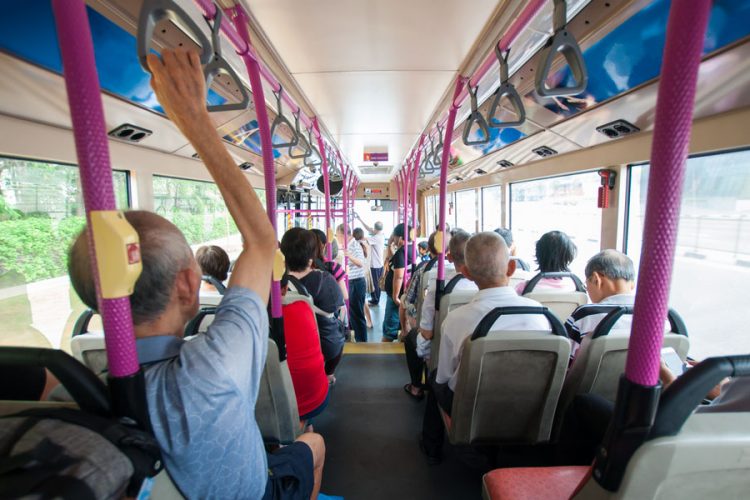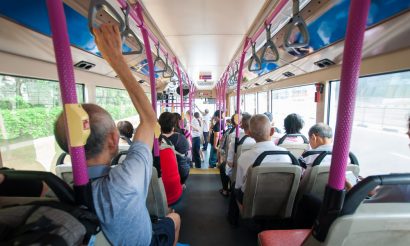Putting passengers at the heart of transport design
- Like
- Digg
- Del
- Tumblr
- VKontakte
- Buffer
- Love This
- Odnoklassniki
- Meneame
- Blogger
- Amazon
- Yahoo Mail
- Gmail
- AOL
- Newsvine
- HackerNews
- Evernote
- MySpace
- Mail.ru
- Viadeo
- Line
- Comments
- Yummly
- SMS
- Viber
- Telegram
- Subscribe
- Skype
- Facebook Messenger
- Kakao
- LiveJournal
- Yammer
- Edgar
- Fintel
- Mix
- Instapaper
- Copy Link
Posted: 16 September 2016 | Linda McCord, Senior Passenger Manager, Transport Focus | 1 comment
Linda McCord explains that getting feedback from passengers on what they want from their travel experience goes a long way to improving passenger satisfaction…


Linda McCord, Senior Passenger Manager at Transport Focus explains that getting feedback from passengers on what they want from their travel experience goes a long way to improving passenger satisfaction. Asking them about on-board vehicle features such as technology, safety and even seat design, lets them know that they are valued and also helps the industry improve.


Transport Focus aims to make a difference for transport users. One way we do this is to carry out research involving rail, bus, and tram passengers, and road users. We aim to understand how transport can best meet passengers’ needs. One of the many issues that can make for a better journey is the design of vehicles. Passenger input on the look and feel of public transport from the start can go a long way to increasing passenger satisfaction.
We’re currently working with Nexus to help ensure passengers’ needs are at the heart of the design of the new Tyne and Wear Metro. Nexus wants to ensure that over the next 20 years, £1 billion of investment is well spent and that means making sure passengers have their say from the start.
Working with Nexus we will ensure passenger views, priorities and preferences are taken into account for future rolling stock design. While an on-time and reliable services will be key, we also want to know the likes and dislikes of the 40 million passengers that travel on the Metro every year.
From the number of seats in a carriage to the availability of luggage space, there are various aspects of the design of future rolling stock and our research will help Nexus understand passengers’ top priorities. By working so closely with passengers the Tyne and Wear Metro will be able to deliver solutions which are tailored to meet passengers’ requirements.
Every year we carry out the Bus Passenger Survey which gathers the views of passengers on their current journey. This year more than 40,000 passengers across England and Scotland took part with 86% of all passengers stating they were satisfied with their last journey. Part of the survey looks specifically at the design of the bus. From the comfort of the seat, the availability of grab rails and information screens on-board, the Bus Passenger Survey provides rich, useful data which bus companies can act on. Wouldn’t it be great when designing new buses if more companies asked passengers what their favourite seat design was – or even better – asked them to test new seats out for comfort?
Technology is also increasingly becoming a key factor that shapes passengers’ experiences on-board public transport. Spend any time on a bus and you will see the number of passengers spending their time checking their emails or browsing the internet is on the rise, less and less are merely gazing out of the window or even feeling bored. Passengers’ expectations of public transport have come a long way and they increasingly expect more.
More buses having next-stop displays and free Wi-Fi being more widely available both ranked in our top 20 bus passenger priorities for improvement. Improved design, such as clear information displays, can empower passengers to make decisions during their journey and free-up the time of the driver. Companies such as Reading Buses are realising the positive impact this can have on the overall journey experience and are looking to passengers’ needs in its ‘Forward Future’ publication.
Letting passengers know you are testing a new seat design or a new approach to displaying passenger information engages them and lets them know you are on their side. Feedback gathered directly from passengers is some of the most powerful customer insight available. If you’re thinking about what passengers want from their travel experience then why not simply ask them?
Biography


Related topics
Fleet Management & Maintenance, Passenger Experience, Ticketing & Payments
Related organisations
Transport Focus









It’s a shame that the DfT/Thameslink trains didn’t read this before ordering the new Siemens trains for Thameslink.
In a world where work/life balance is becoming more important and workers are becoming more mobile – a commute can actually be good working time, reducing hours spent in the office. So why do these new trains not have any tables to put laptops on (or even a coffee) – this seems a very backwards step
And I can’t believe the seat design was tested by anyone who has a 1.5 hour commute, as they are extremely upright and uncomfortable – fine for short urban trains but not long commutes.
On the plus side, uncomfortable trains might encourage more people to work from home, reducing overcrowding on already busy lines.